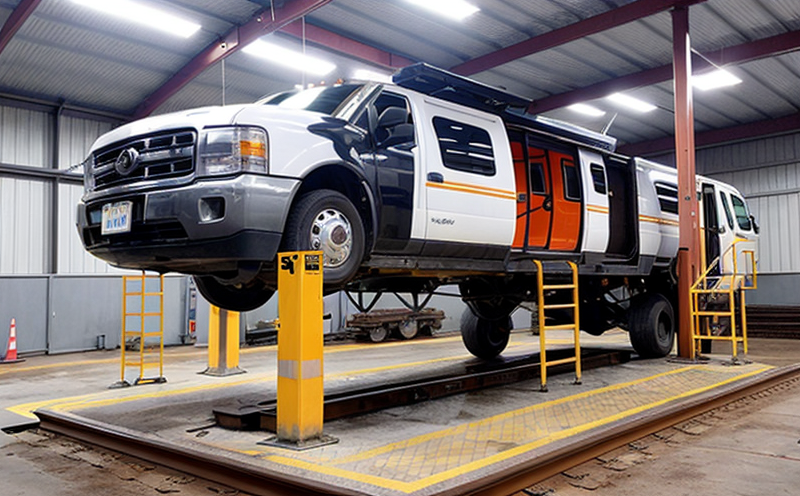Platform lift inspection
Platform lifts are an essential component of modern building infrastructure, providing mobility solutions to individuals with limited mobility or those carrying heavy loads. Ensuring the safety and reliability of these lifts is critical for both the users and operators. This service page focuses on platform lift inspections, a specialized area within elevator and escalator inspection services.
Platform lifts are subject to strict regulatory requirements to ensure they meet safety standards set by international bodies such as ISO 18729:2016. These regulations aim to prevent accidents and injuries caused by mechanical failures or improper use of the lift. The inspection process involves a thorough examination of critical components including the drive system, control panels, braking systems, and emergency stop mechanisms.
The inspection also covers the lift's structural integrity, ensuring that it can withstand the expected load without compromising safety. Additionally, the soundness of the lift cabin, doors, and their operating mechanisms is assessed to ensure smooth operation under various conditions. Compliance with local building codes and standards ensures that platform lifts are not only safe but also fully integrated into the overall building environment.
During inspections, certified inspectors use a variety of tools and techniques to evaluate the lift's performance. This includes the use of precision gauges for measuring dimensions, pressure testers for checking fluid levels, and specialized software for analyzing control systems. The goal is to identify any potential issues before they become critical failures that could endanger users.
The frequency of inspections varies depending on factors such as usage rate and local regulations. Typically, platform lifts are inspected annually or biennially, but this can be adjusted based on the lift's specific conditions and performance history. Regular maintenance and timely inspections are crucial for extending the lifespan of these lifts and ensuring they continue to operate safely.
Scope and Methodology
| Aspect | Description |
|---|---|
| Drive System Inspection | Involves checking the motor, speed reducer, and drive chain for signs of wear or damage. This ensures that the lift operates smoothly and efficiently. |
| Control Panel Examination | Assesses the integrity and functionality of the control panel to ensure all buttons and indicators are operational and accurate. |
| Breaking Systems Evaluation | Evaluates the braking mechanisms for effectiveness and reliability, ensuring they can stop the lift safely in case of emergencies. |
| Emergency Stop Mechanism Check | Tests the emergency stop button to ensure it is functional and that the lift halts immediately upon activation. |
The methodology for platform lift inspections follows a structured approach. Inspectors begin by reviewing the lift's service history, including any previous incidents or maintenance records. This information provides valuable insights into the lift's current condition and potential areas of concern.
Visual inspection is followed by functional testing, where inspectors operate various components to ensure they perform as expected. This includes operating the lift in all directions (up, down, sideways) to check for smoothness and stability. Additionally, environmental factors such as temperature and humidity are monitored to assess their impact on performance.
The inspection also involves non-destructive testing techniques like ultrasonic or magnetic particle testing to detect hidden defects that may not be visible during a visual examination. Once the inspection is complete, comprehensive reports are prepared detailing all findings and recommendations for corrective actions if necessary.
Industry Applications
- Residential Buildings
- Commercial Structures
- Public Spaces
- Healthcare Facilities
| Application Type | Description |
|---|---|
| Residential Buildings | Platform lifts in residential buildings provide access to multiple floors, enhancing convenience for residents. |
| Commercial Structures | In commercial settings, platform lifts are used in places like offices and shopping centers to facilitate mobility. |
| Public Spaces | They are installed in public spaces such as museums or libraries for easy access by visitors with disabilities. |
| Healthcare Facilities | In healthcare facilities, platform lifts ensure that patients and staff can move between floors safely and efficiently. |
The versatility of platform lifts makes them suitable for a wide range of applications across various sectors. In residential buildings, they provide essential mobility solutions to elderly residents or those with limited mobility. Commercial structures benefit from the increased accessibility that platform lifts offer, enhancing customer experience and operational efficiency.
In public spaces, these lifts ensure that all visitors have easy access to different areas within a building. For healthcare facilities, the safety and reliability of these lifts are paramount, as they contribute significantly to patient care and staff workflow.
Customer Impact and Satisfaction
- Increased Safety
- Improved Compliance
- Prolonged Lift Lifespan
- Enhanced User Experience
The primary goal of platform lift inspections is to ensure the safety and reliability of these lifts, thereby enhancing user confidence and satisfaction. By identifying potential issues early on, customers can prevent accidents and injuries that could occur due to mechanical failures.
Compliance with local regulations is another key benefit of regular inspections. This not only reduces legal risks but also ensures that the lift operates within safe parameters set by international bodies like ISO 18729:2016. Regular maintenance and inspections contribute to a prolonged lifespan for platform lifts, reducing the need for premature replacements.
From an operational perspective, customers can expect enhanced user experience through smooth and reliable lift operations. This leads to higher customer satisfaction levels and improved overall building functionality.





